With the historic first international handshake in space only six months away, preparations on the ground for the Apollo-Soyuz Test Project (ASTP) accelerated. Workers stacked the Saturn IB rocket for the mission while the American prime and backup crews conducted vacuum chamber tests of the Apollo Command Module (CM). Delegations of Soviet specialists arrived in the United States for joint meetings and technical work with their American counterparts.
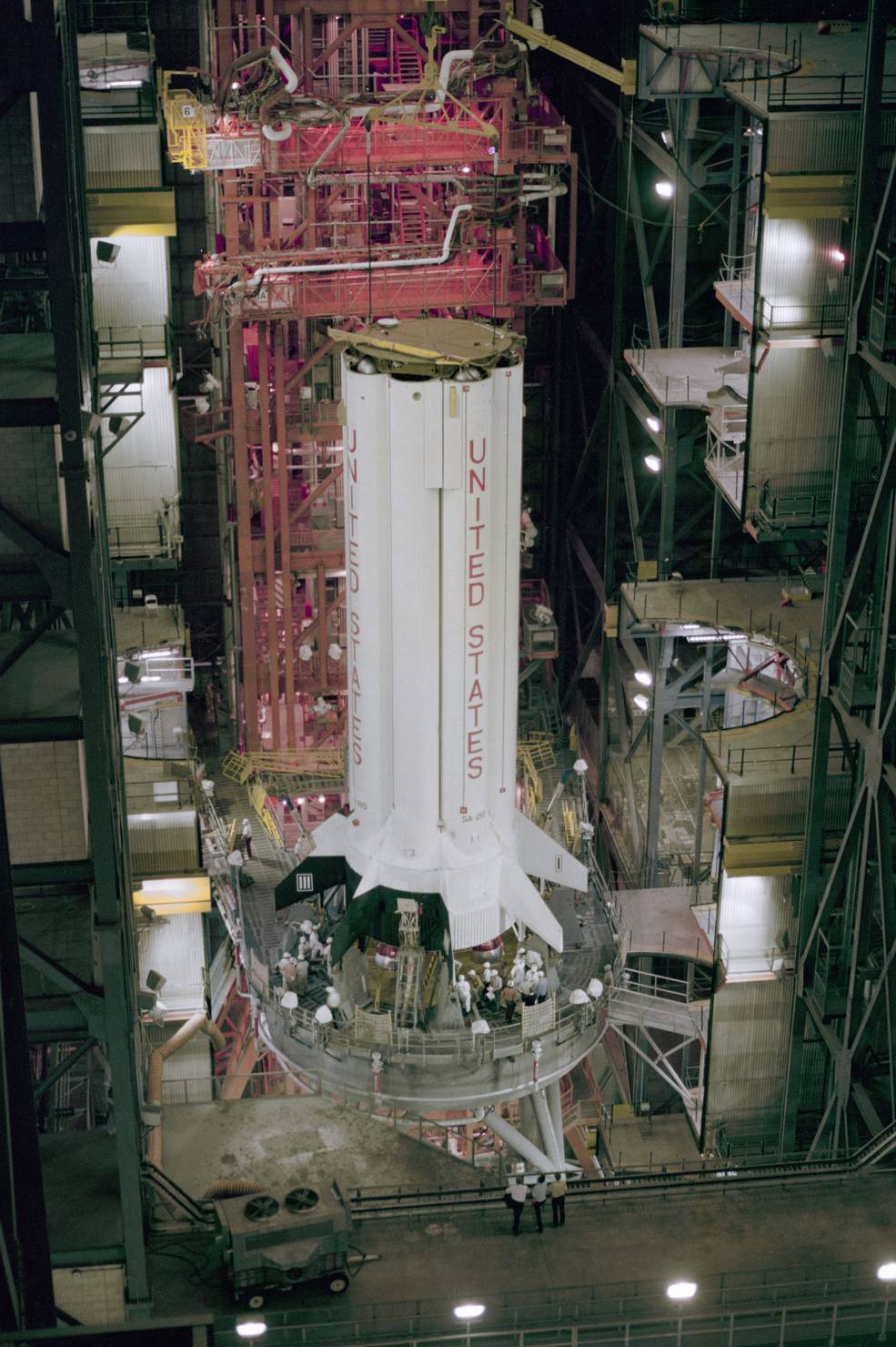
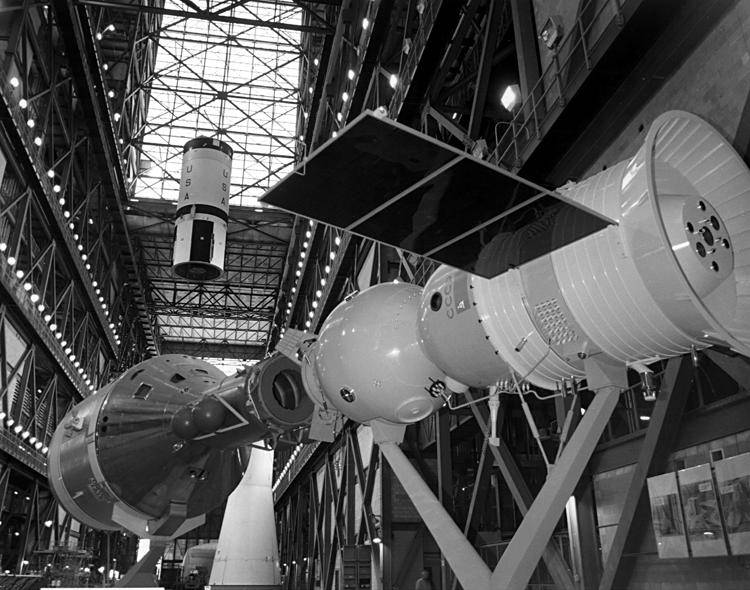

Left: Inside the VAB, workers secure the first stage of the Saturn IB rocket onto the milkstool.
Middle: Workers lift the second stage of the Saturn IB rocket prior to mating with the first stage,
with a mockup of an Apollo and a Soyuz spacecraft in the foreground. Right: Workers lower a boilerplate
Apollo spacecraft onto the Saturn IB rocket.
Inside Kennedy Space Center’s (KSC) cavernous Vehicle Assembly Building (VAB), workers stacked the Saturn IB rocket’s first stage onto the milkstool pedestal atop a Mobile Launcher on Jan. 13. The milkstool, a 128-foot tall platform, allowed the Saturn IB to use the same Launch Umbilical Tower as the much larger Saturn V rocket at Launch Complex 39. The next day, workers lowered the second stage onto the first, followed by the Instrument Unit two days later. Finally, on Jan. 17 workers topped off the rocket with a boilerplate Apollo spacecraft since engineers continued testing the flight article in KSC’s Manned Spacecraft Operations Building (MSOB).
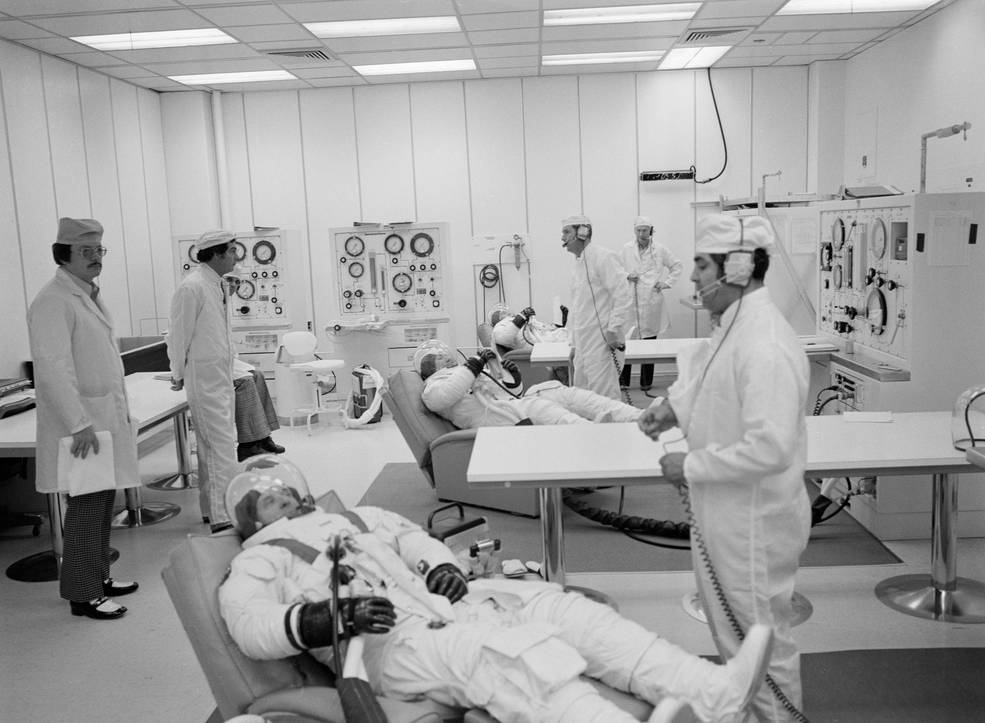
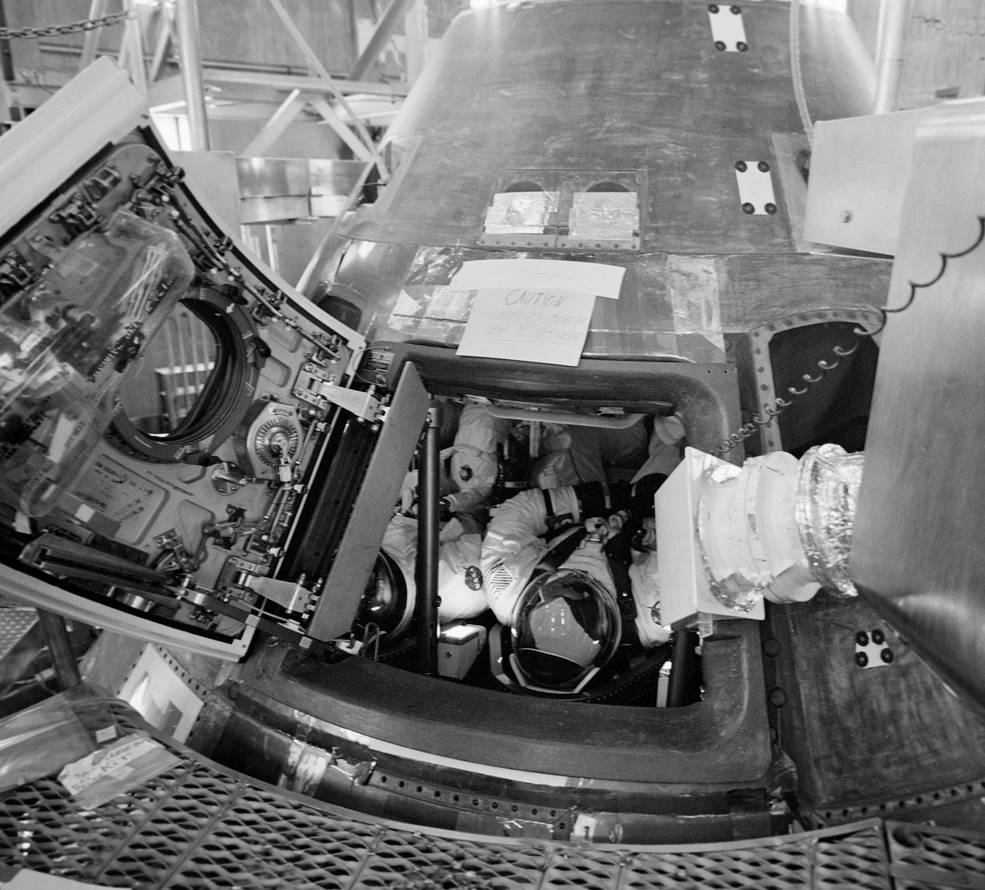
Left: ASTP prime crew (left to right, in recliners) Stafford, Brand, and Slayton suited up in
preparation for an altitude chamber test in the CM. Right: The ASTP prime crew inside the CM.
After completing a simulated run in December 1974, the ASTP prime Apollo crew of Commander Thomas P. Stafford, Docking Module Pilot Donald K. “Deke” Slayton, and Command Module Pilot Vance D. Brand suited up, entered the CM inside an altitude chamber in the MSOB, closed the hatch and conducted an actual test on Jan. 14, with the chamber simulating altitudes of up to 220,000 feet. Two days later, the backup crew of Alan L. Bean, Ronald E. Evans, and Jack R. Lousma completed a similar test.
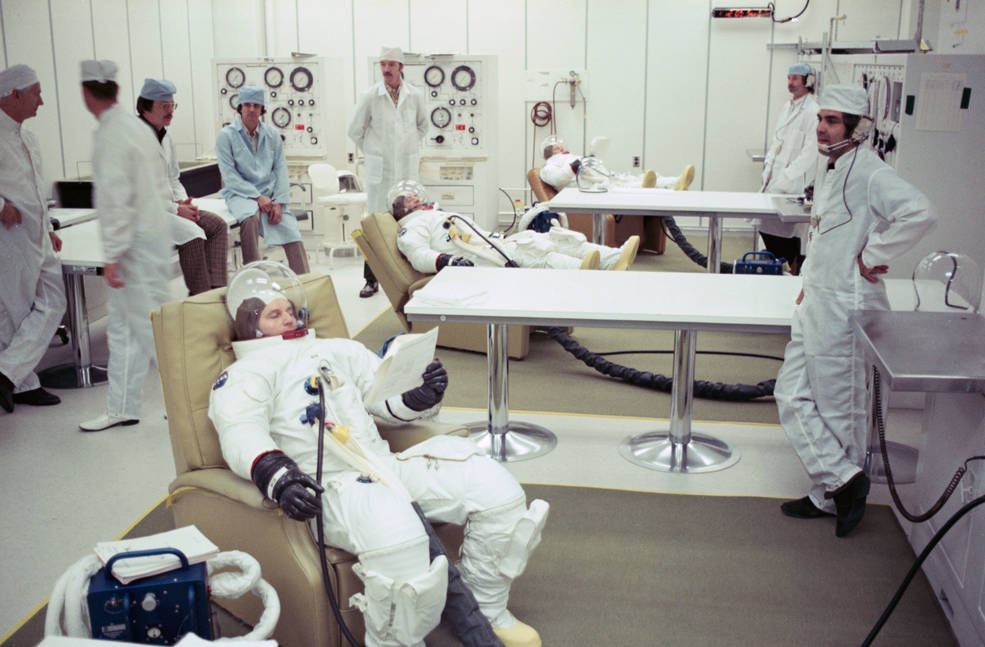
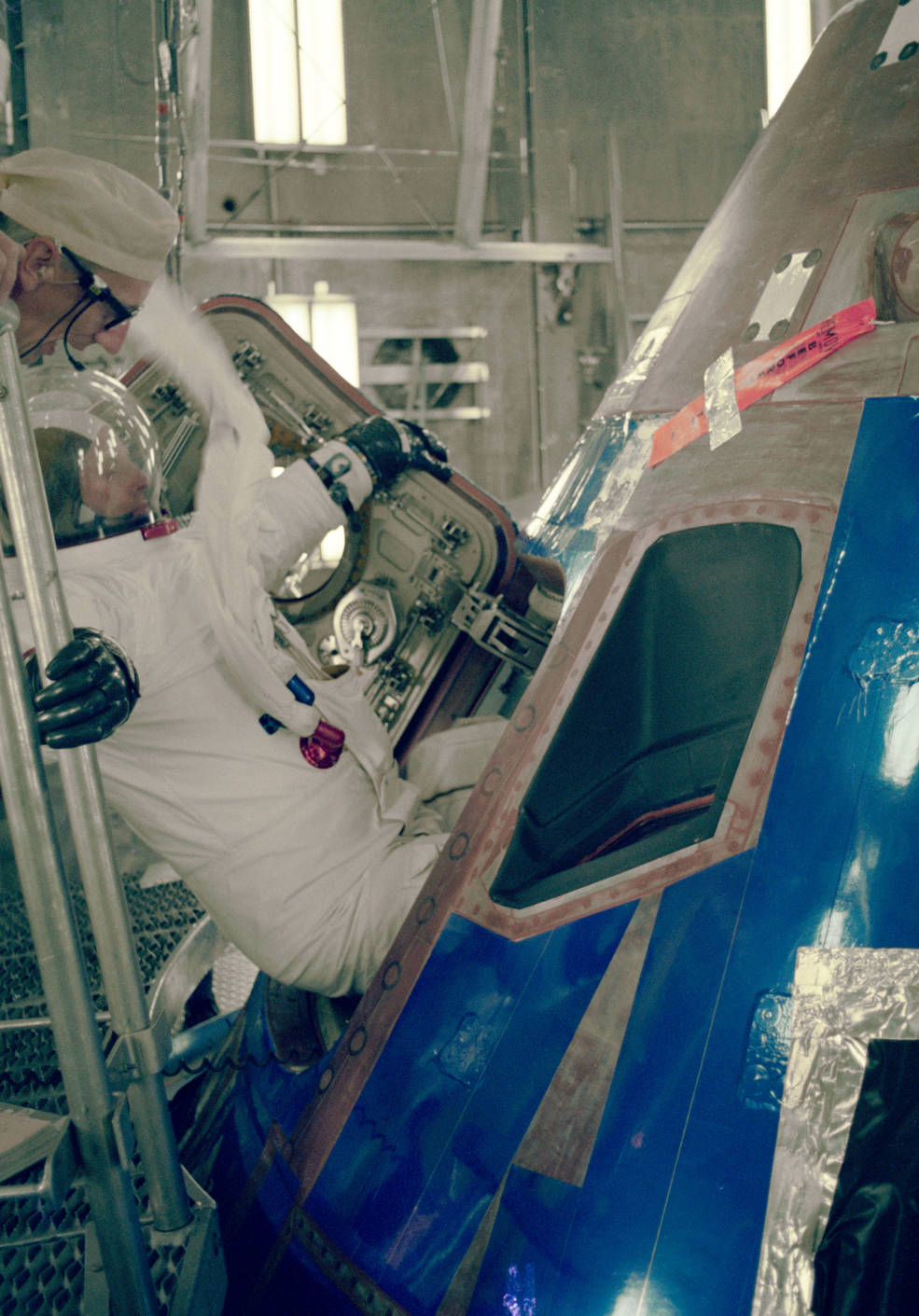
Left: ASTP backup crew (left to right, in recliners) Bean, Evans, and Lousma suited
up in preparation for an altitude chamber test in the CM. Right: ASTP backup
crewmember Lousma ingressing the CM.
To solve the problem of the Apollo and Soyuz spacecraft operating at different atmospheric pressures and compositions and using incompatible docking mechanisms, engineers designed a Docking Module (DM) that acted as both an airlock and a transfer tunnel and a Docking System (DS) that allowed the two nations’ spacecraft to physically join in space. The two systems enabled the crewmembers from each spacecraft to visit the other. NASA contracted with North American Rockwell (NAR) in Downey, California, the manufacturer of the Apollo spacecraft, to build the DM. Soviet engineers designed the androgynous DS and the Soviet enterprise NPO Energia built it. Engineers equipped one end of the DM with the standard Apollo probe-and-drogue docking mechanism used during the Moon landing missions and the other end with the androgynous system that linked up with its opposite half installed on the modified Soyuz spacecraft. During launch, the DM rested inside the Spacecraft Lunar Module (LM) Adaptor (SLA) atop the rocket’s upper stage, much like the LM during the Apollo Moon landing flights. Once in orbit, the astronauts separated the Command and Service Module (CSM) from the upper stage, turned the spacecraft around, docked with the DM and pulled it free. In orbit, the Apollo spacecraft operated at 100 percent oxygen at a pressure of 5 pounds per square inch (psi), while the Soyuz normally operated a nitrogen/oxygen mixture at 14.7 psi. To avoid having the cosmonauts conduct extensive prebreathing with pure oxygen before transferring to the lower Apollo pressure, they lowered the pressure in the Soyuz to 10 psi prior to the docking.
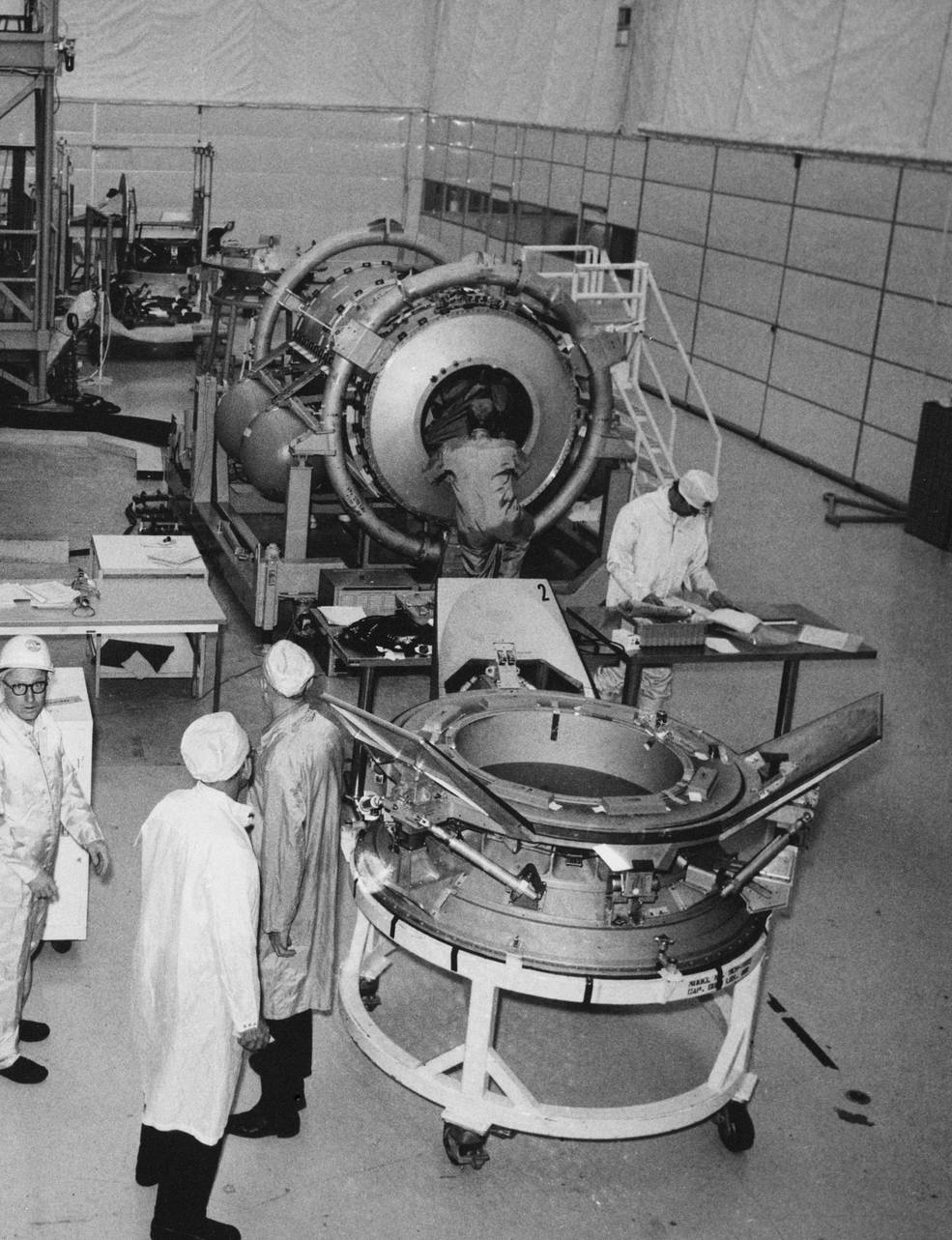
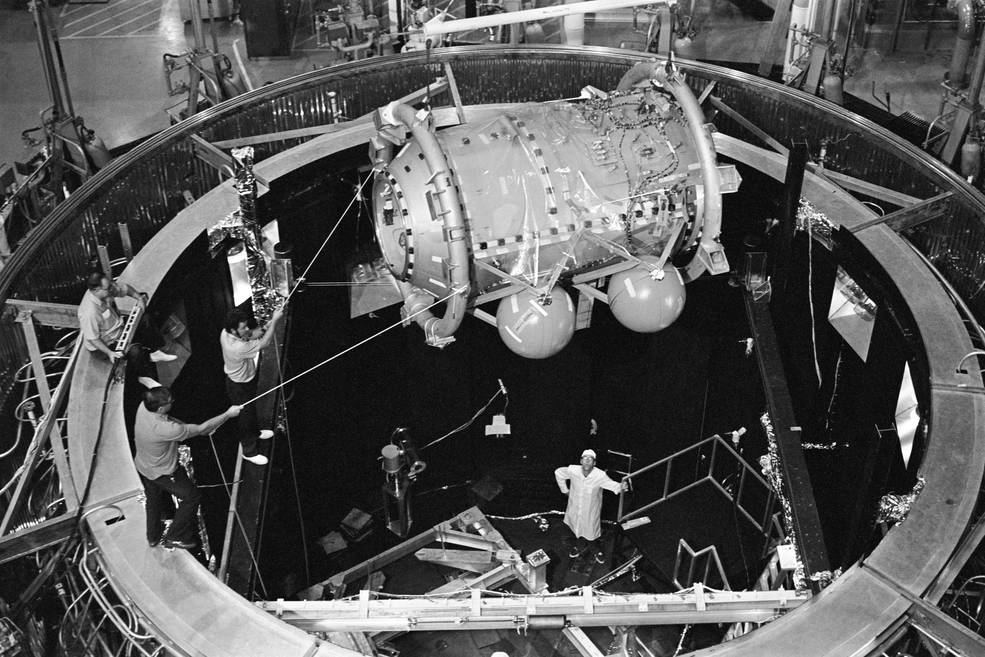
Left: ASTP DM (in background) and DS (in foreground) at NAR facility.
Right: Workers lowering the DM into Chamber B in SESL at JSC.
After extensive vacuum testing in Chamber B of the Space Environment Simulation Laboratory (SESL) at the Johnson Space Center in Houston, the flight DM arrived at KSC on Oct. 29, 1974, and workers prepared it for more testing in a vacuum chamber in the MSOB. The flight DS arrived at KSC on Jan. 3, 1975, and two weeks later workers installed it on the Soyuz end of the DM. On Jan. 27, engineers lowered the DM onto the Command Module to conduct a mechanical docking test, much as they did prior to Moon landing missions with the LM. The next day, a team of 11 Soviet specialists arrived at KSC, the first Russian space technicians ever to visit that NASA center. With their American colleagues they conducted 10 days of joint tests of television and audio equipment to be carried in the Soyuz to ensure compatibility with Apollo and DM systems. The Soviet delegation received tours of facilities at KSC including Launch Complex 39 and visited Disney World.
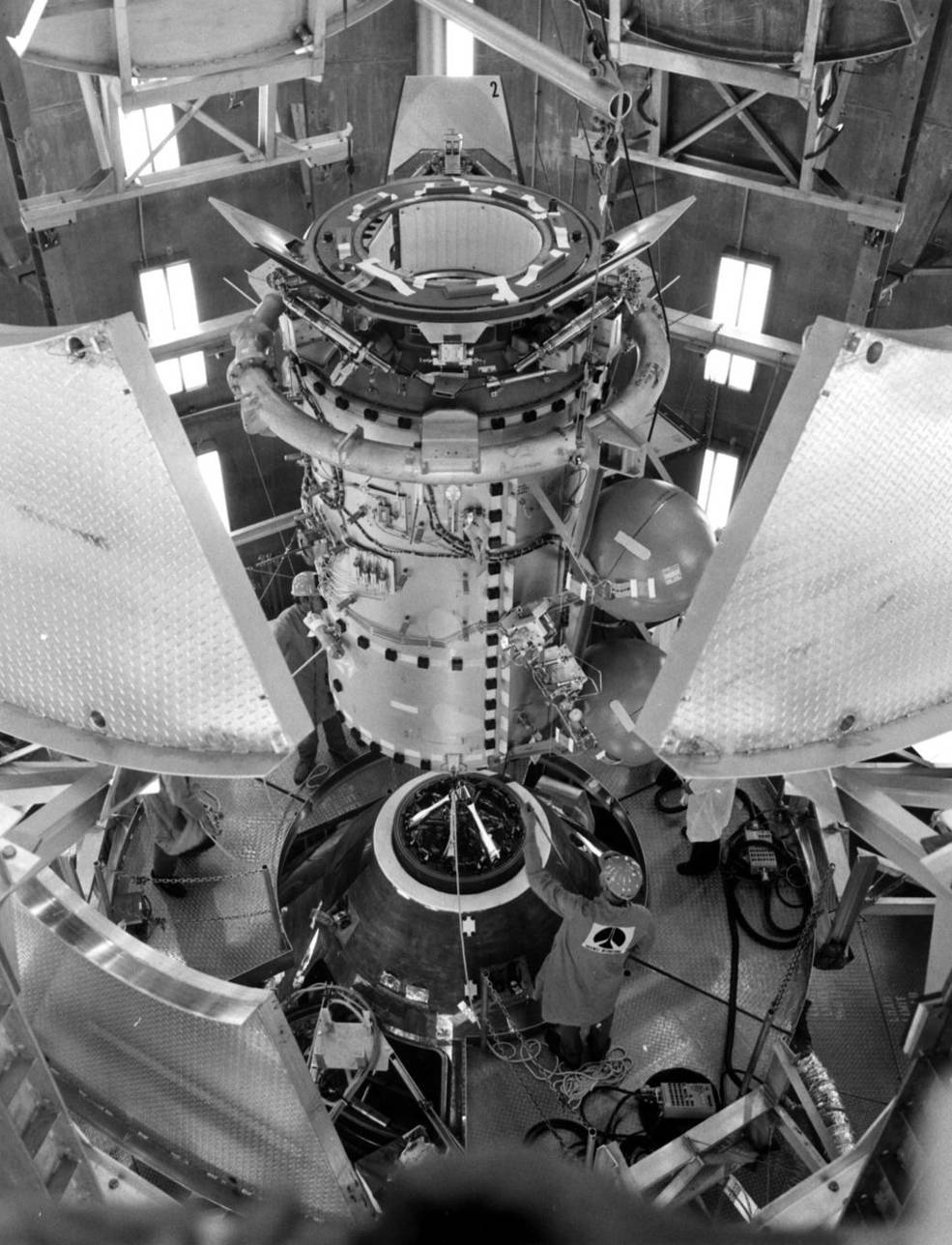
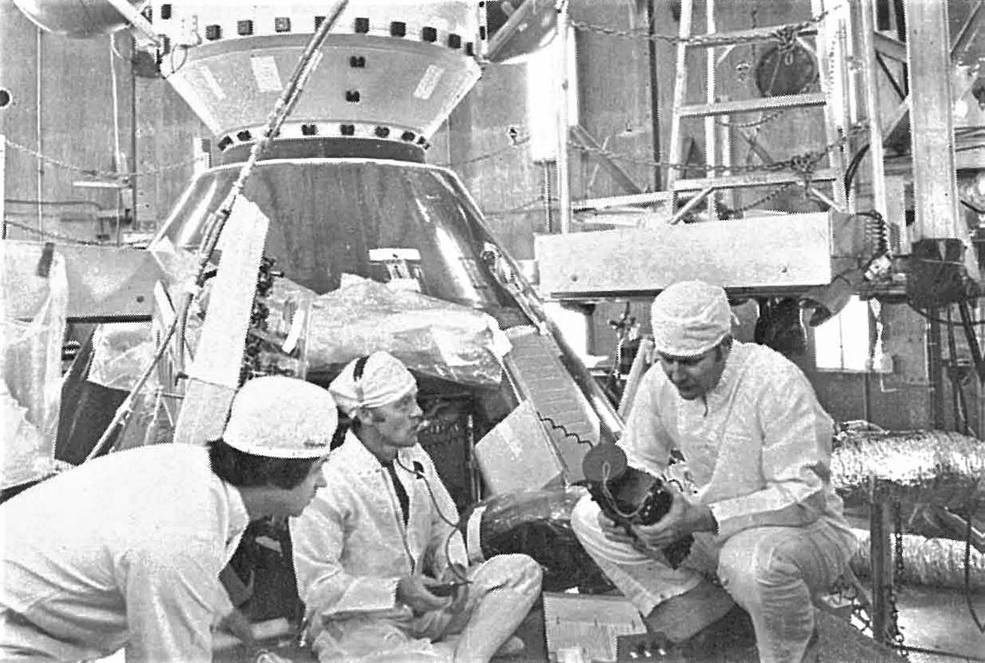
Left: Workers conduct a docking test of the DM with the CM at KSC. Right: ASTP support
astronaut Robert F. Overmyer (at right) works with Soviet specialists during
compatibility testing at KSC.
In order to effectively coordinate planning and operational activities for the joint mission, American and Soviet specialists had established five technical working groups composed of specialists from both sides. The working groups had met periodically since 1971 to resolve complex issues relating to the joint mission. About 80 Soviet personnel from the five ASTP technical working groups arrived in Houston Jan. 18 for three weeks of joint meetings with their American counterparts, the last major meeting of the specialists before the July 1975 mission. Major topics for discussions for each of the working groups included,
- Working Group 1 prepared for the joint simulations planned for March 1975;
- Working Group 2 worked on emergency procedures for the mission;
- Working Group 3 reviewed the results of tests performed on the docking system;
- Working Group 4 reviewed the results of tests of the flight communications systems; and
- Working Group 5 prepared its final report on the compatibility of the two spacecraft’s life support systems and certified the equipment transferred between the two vehicles.
Top managers Boris N. Petrov of the Soviet Academy of Science and Konstantin D. Bushuyev, USSR ASTP project director, arrived a few days later for meetings of the Working Group Zero management team. Gemini and Apollo Flight Director Glynn S. Lunney served as the American ASTP Manager.
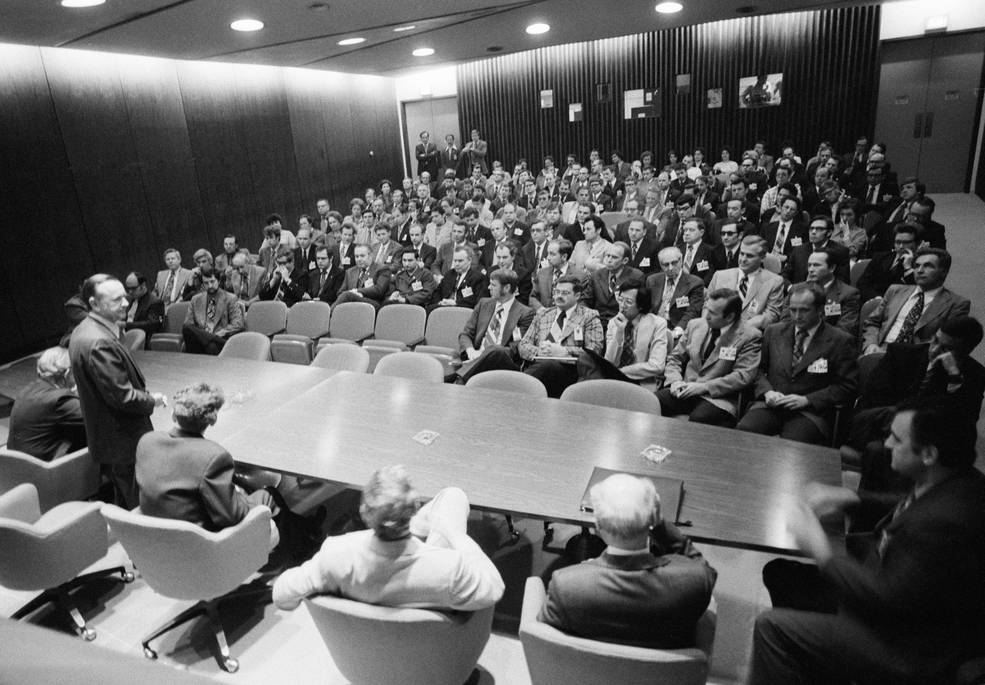
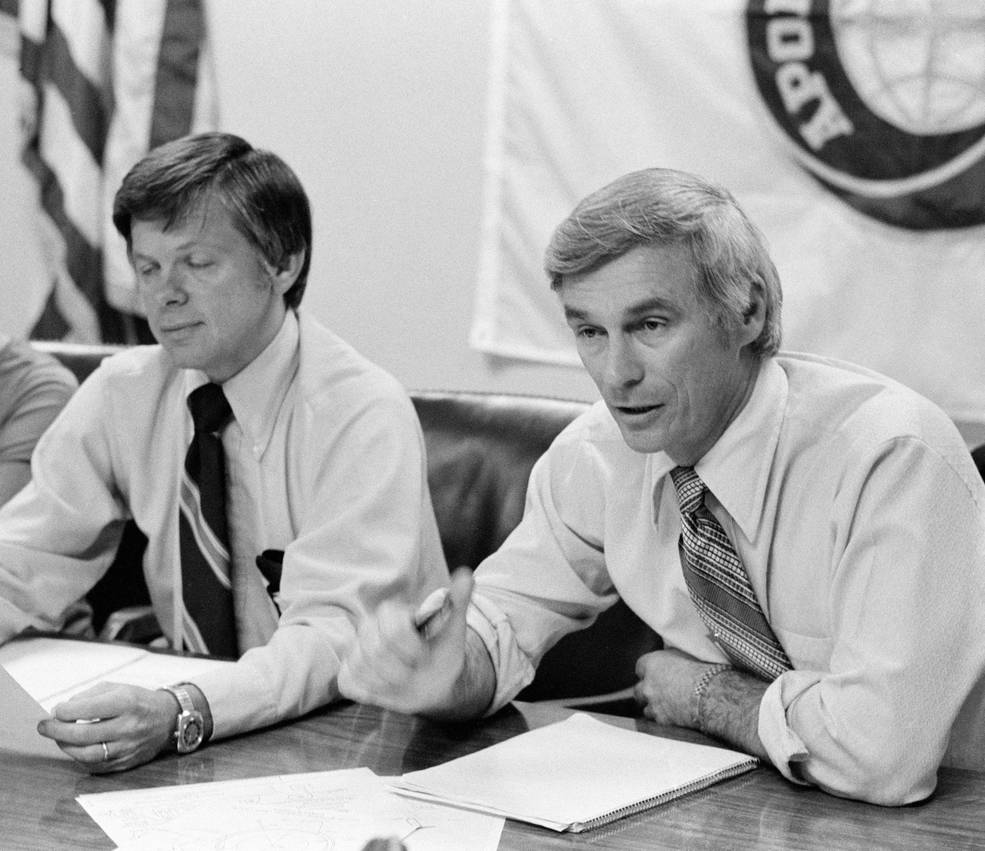
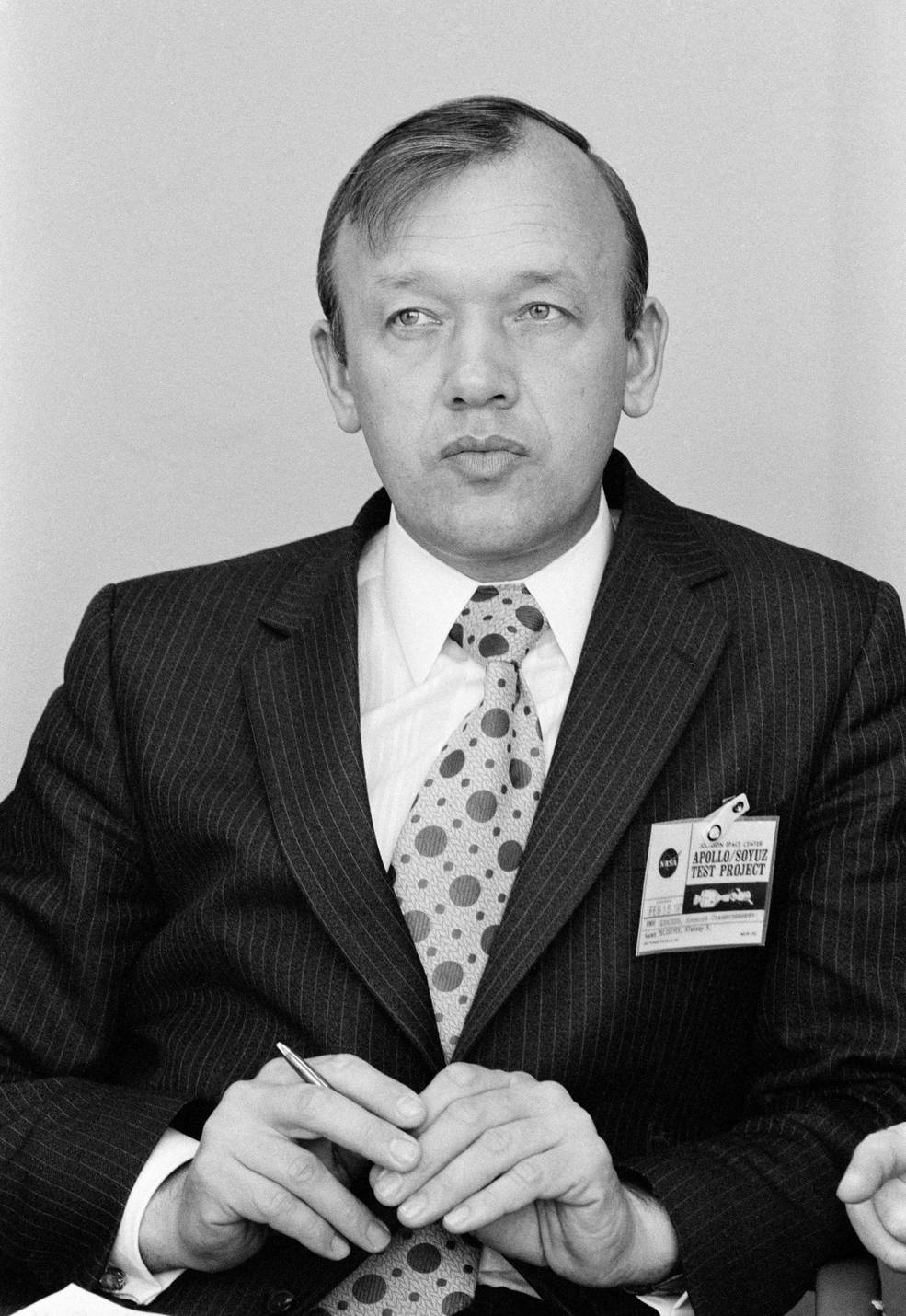
Left: Center Director Christopher C. Kraft welcomes the Soviet delegation to JSC.
Middle: Flight Director M.P. “Pete” Frank and astronaut Eugene A. Cernan, US representatives during
a Working Group 3 meeting. Right: Cosmonaut Aleksei S. Yeliseyev, head of the Soviet Working Group 3 delegation.
To be continued…


























